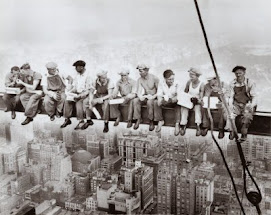"Your argument is analogous to arriving at an automated assembly plant for cars and stating that the robots "assembled" the cars and there was no need for human engineers when in fact it was human engineers who designed the robots to assemble the cars which were designed by human engineers."
The problem with this analogy is the origins of the robots: it could very well be possible that something else rather than human engineers "designed" the robots or the robots could have always existed. That said, the analogy does do a fairly good job of describing the situation we find ourseleves in. It is like we have entered an "automated" world full of machinery, assembly plants, and factories. So how do we make sense of it all?
A similar analogy was recently put forward by Mike Gene at Telic Thoughts where he more broadly and skillfully illustrates the predicament we find ourselves in:
"Consider some movie where you, the viewer, know that Jones killed Smith, because you watched it happen. Jones, of course, subjectively knows that he killed Smith. The police investigator doesn’t know this, he simply believes that Jones killed Smith because of some clues. The investigator then privately confronts Jones and accuses him of murder. Jones, privately knowing the investigator is correct, simply replies, “There is no evidence and you can’t prove it” and the investigator knows this is true.
Right there, in that scene, we see the difference between evidence and truth. Relying solely on the evidence may very well deliver only a superficial, or even false, understanding of the world."
So let's open up the comments with this: how do we determine whether design is an illustion or not, and perhaps more interesting, should we be making that judgment at all?
Note: I am a supporter for a side-by-side paradigm where those who believe design is an illusion can work productively with those who think design is not an illusion. Both side have interesting things to bring to the table while keeping each other in check.



